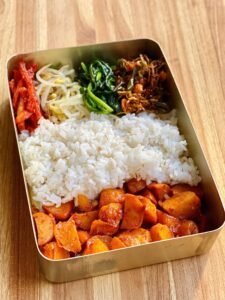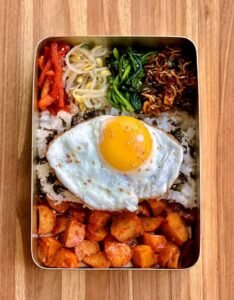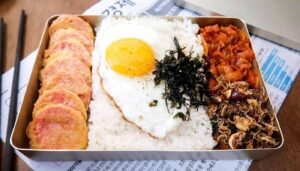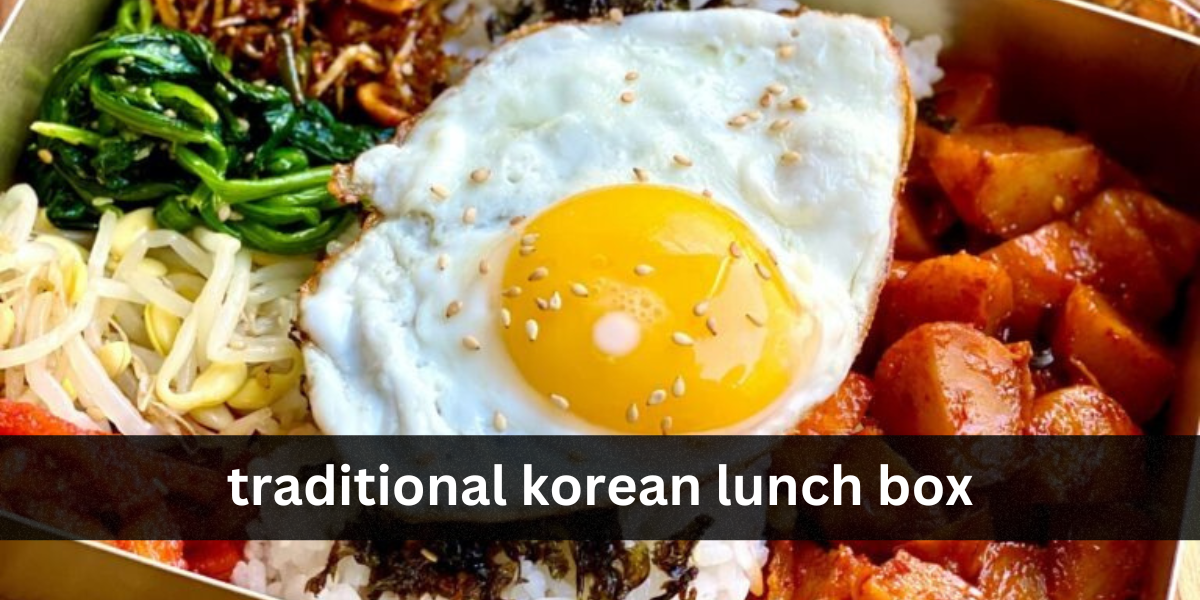In relation to the dish that we are going to be discussing today, let’s travel back in time and take a stroll down memory lane.
We are going to begin by taking a look at a classroom that was situated in Korea throughout the 1970s. This classroom was there during that time period. You are going to be able to recognize a sizable radiator that is situated in the middle of the room. Not only was this intended to function as the central heating unit, but it also served the purpose of warming up lunch boxes. This was the primary objective of this.
Simply laying it on top of the dosiraks will cause them to reach extraordinarily high temperatures in a very short amount of time!
Tinplate, which is also known as German silver, is the material that is utilized most frequently in the production of traditional dosirak, which is the Korean name for lunchbox. Tinplate is also occasionally referred to as Japanese silver. It is also referred to as German silver.

In order to create tinplate, sheets of metal are coated with a very thin layer of tin, which is then applied to the surface of the sheets. These sheets are ultimately used to construct tinplate. During the 1970s, the Korean economy was in the process of transitioning from an economy that was dependent on exports to an economy that was industrialized. The production of a wide range of consumer goods and necessities for the household was the responsibility of heavy industry, which was responsible for the manufacturing of these categories of goods.
After we have finished discussing that, let’s move on to the next topic, which is the assortment of banchans that may be found in a conventional Korean lunch box.
According to the Korean market, the Boon-Hong sausage, which is spelled 분홍소세지, is a sausage that is extremely well-known and widely recognized.
The consumption of it was something that a substantial number of individuals, including my parents, had become accustomed to doing during this time period. Among those in this category were my parents.
lunch box
In the 1970s, the average Korean home was still unable to afford to consume fresh meat on a daily basis due to the high cost of the item. This was the case with the majority of Korean households. Because of the costly nature of the protein, this was the situation that arose. The average gross domestic product in 1970 was slightly less than $279. This was the year that the average
Because of this, local businesses have begun to promote processed meats that are more affordable in order to provide an alternative to the regular meat that is available. Because it was made in the country and was even more reasonably priced than SPAM, which was difficult to get, the “pink sausage” garnered a lot of popularity among members of the Korean population. This was due to the fact that it was created in the country. There were three key components that were utilized in the manufacturing process of a significant quantity of it. These components were pork meat, corn starch, and flour.
As a result of being cooked in the same manner as conventional sausage, the surface of the sausage does not get crunchy. This is because it has a significant amount of flour in it, which is the reasoning behind this.

It was common knowledge that in order to achieve a crispy texture when pan-frying an item, one should first batter the item with flour, then dip it in egg wash, and lastly pan-fry it. This was done in order to achieve the desired texture. In the past, it was normal practice to incorporate anchovies into the formulation of culinary dishes. As a consequence of the fact that fresh meat was not available at a price that was affordable for consumption on a regular basis, this transpired.
In spite of the fact that they are relatively inexpensive, anchovies are an excellent source of vitamins and minerals. They include a high concentration of omega-3 fatty acids and a large amount of protein, and they also have a high concentration of proteins. When the banchan is stir-fried with the appropriate ingredients and sauces as the foundation, the dish that is produced is one that is not only delicious but also satiating.
Despite the passage of time, a significant percentage of mothers continue to prepare stir-fried anchovies as their go-to banchan for their young children.
In this regard, there is not much more that can be said other than to repeat that… The significance of kimchi to the culture and society of Korea cannot be underestimated. Kimchi is a staple food in Korea. In Korea, kimchi is considered a staple meal.
In spite of the fact that the situation has become increasingly terrible, there is always the possibility that you may borrow some kimchi from your neighbors. This is an aspect that needs to be taken into consideration.
When these three banchans are served together with rice, individuals who were born and raised in Korea before the 1980s will experience sensations of nostalgia similar to those experienced by those individuals. They are reminiscent of the culture of Korea, which is the reason for this statement.
In order to receive additional points, you have the option of including a fried egg and a sprinkle of dried seaweed flakes, which are also known as kimjaban. This will allow you to earn additional points. In the event that you decide to make this traditional Korean lunch box at home, you should also post a picture of it to our Instagram account. This is something that we would be ecstatic to witness in the future!
Ingredients
1 whole Korean Pink Sausage (분홍소세지) Or substitute with any sausage you like!
½ cup All Purpose Flour Or use Korean Pancake Mix (부침가루)
2 whole Eggs
Few pinches Salt (To season the eggs)
Instructions

Ingredients
1 cup of Dried Anchovy (small-sized)
¾ cup of Mixed Nuts
6-7 cloves of Garlic
1 whole Cheongyang Chili Pepper (or substitute with ½ Jalapeno Pepper)
1 stalk of Spring Onion (forearm length)
Sticky Soy Glaze
½ Tablespoon Soy Sauce
½ Tablespoon Sugar
1 Tablespoon Mirim
2 Tablespoons Honey
Garnish
½ Tablespoon Sesame Seeds
Instructions
Prep Ingredients
Cook Anchovies
Preheat the frying pan to MEDIUM heat. Pour in vegetable oil (about 2 tablespoons). Once the oil is hot, add the garlic pieces. Stir the garlic pieces until they are lightly browned. Then add the dried anchovies. Stir the anchovies and garlic for 2-3 minutes.
After 2-3 minutes, swiftly add Soy Sauce (½ Tablespoon), Sugar (½ Tablespoon), and Mirim (1 Tablespoon). Stir everything together thoroughly so that it is evenly distributed. Then, combine the nuts, sliced spring onion, and chili pepper bits. Stir everything together for an additional 1-2 minutes.
After 1-2 minutes, add 2 tablespoons honey. Give it a final whisk to ensure everything is properly distributed. This honey will make the dish pleasant and sticky. Remove from heat and add ½ tablespoon of sesame seeds for garnish.
Serve alongside a dish of heated rice. Save leftovers in Tupperware and refrigerate. It should be good for up to 2-3 weeks.
FAQ:
Is dosirak served hot or cold?
It is possible to serve dosirak either hot or cold, depending on the particular composition of the foods that are consumed with it. One is able to carry out this activity when they are being served. Other components can be served at a temperature that is either high or low, while others can be served at room temperature. Some components can be served at room temperature. They are ready to be served when they have reached the temperature of the room.
Can I customize the contents of a dosirak?
In actuality, dosirak can be modified to accommodate the preferences of the individual as well as any dietary limitations that may be present, the specifics of which are contingent upon the circumstances. You have the ability to select from a large variety of different sorts of snacks, vegetable side dishes, and protein selections in order to cater to your preferences and satisfy your needs.
Is dosirak typically homemade or store-bought?
In Korea, it is common practice to consume both dosirak that is prepared at home and dosirak that is purchased from a store. Both types of dosirak are consumed. In contrast to solutions that can be purchased from a store, which offer convenience for people who are constantly on the move, dosirak that is manufactured at home allows for greater flexibility and customization. At-home production of dosirak is a viable option.
Can dosirak be prepared in advance?
There is no doubt that dosirak may be prepared in advance and kept in the refrigerator until it is time to enjoy it. This is definitely something that can be done. The validity of this proposition cannot be questioned in any way. This makes it an option that is good for picnics and lunches that are packed because it is convenient. As a consequence of this, it is a choice that is suitable for picnics.
Are there vegetarian or vegan dosirak options?
As a response to your inquiry, the answer is that there are alternatives to dosirak that are suitable for vegetarians and vegans to consume. There is a wide range of plant-based proteins that can be utilized in the preparation of these alternatives to dosirak meals. Tempeh, tofu, and veggies that are particularly succulent are some examples. By omitting the gimbap and the side dishes that contain meat and seafood, it is also feasible to produce a dosirak that is suitable for vegetarians and vegans. This can be accomplished by removing the pork and shellfish from the dish. These ingredients combine to produce a dosirak that is suitable for vegans and vegetarians.
Is dosirak typically eaten for lunch or dinner?
The most common time to have dosirak is during lunchtime; however, it can also be consumed as a light dinner or snack alternative. In any of these capacities, it is feasible to consume dosirak that has been prepared.
ALSO READ: spicy garlic dakgangjeong
